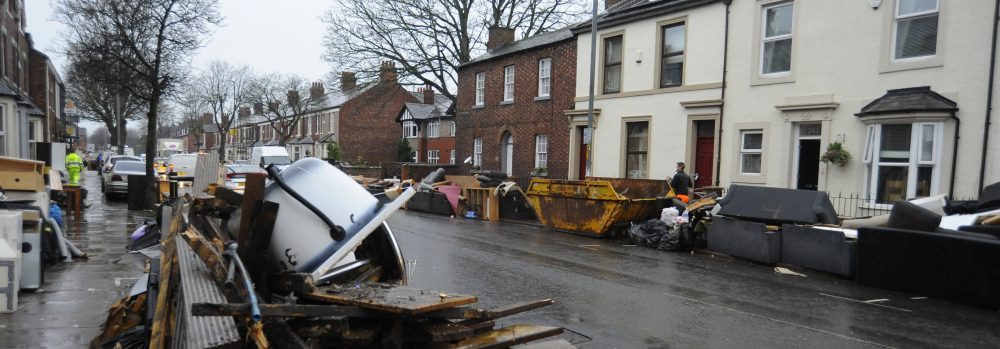How to Catch a River was a project that focused on stories about flooding, developed as part of Claire Dean’s role as writer-in-residence for Ensemble, a Lancaster University project on digital technologies and environmental change. During the research, Claire developed three very different kinds of flood stories…
The River Library
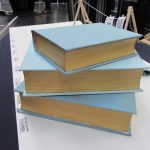 The River Library is a set of three books designed to inspire storymaking. Each book contains a miniature 3D model of a river.
The River Library is a set of three books designed to inspire storymaking. Each book contains a miniature 3D model of a river.
People are invited to throw story dice into the books and to use these as prompts to help them tell their own stories of rivers and flooding.The symbols on the story dice include people and animals, landscapes, characters from folklore, and objects that might help in a flood. The more dice someone throws the more chance there is of a big flood, but they could also get more elements to use in their story. People are then invited to share the story they’ve made using stamps and ink to record it.They take one copy home and another becomes part of the story collection in The River Library.
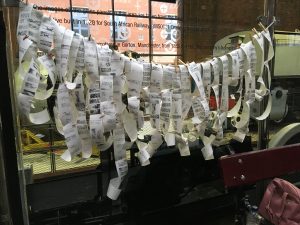
The River Library was part of Ensemble’s Flow event for Manchester Science Festival 2017. It was enjoyed by people of all ages and 95 stories were created and shared on the day.
The Tide Jar
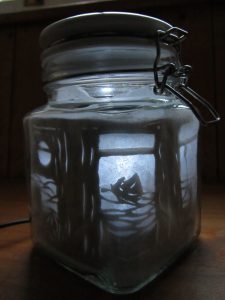
The Tide Jar
The Tide Jar is a story lantern that only lights up in the early evening when there is a full or new moon. This is when spring tides bring higher water levels and a greater chance of flooding to properties beside tidal rivers. Paper cut-out silhouettes tell a simple story of a child who lives beside a river growing to adulthood. The passage of time is shown in this way because lunar tides follow an eighteen-year cycle. In the child’s home, signs of flooding and recovery are visible over time.
The lantern is intended to provide a gentle nudge to someone living by a river to pay attention to where the water level is, without being a constantly visible reminder of past distress. In this way it becomes an object that can be used for ‘active remembering’, inspired by the research of Lindsey McEwen et al (2017) into sustainable flood memories.
We Are Riverish
We are Riverish is a story that won’t last. Printed on water-soluble paper the story is made to dissolve in water and is inspired by the fact that over time many libraries and people’s book collections have been lost to flooding (including, very nearly, the researcher’s own).
We often think books will last forever and don’t consider the possibility of them being damaged by floods. This is a story that knows flooding is always a possibility. It exists to be read, remembered and returned to the river with the rain.
 As part of her PhD in Design and Computing Making Wonder Tales: an Exploration of Material Writing Practice for Ecological Storymaking at Lancaster University, Claire Dean explored different ways of making stories and working with technologies to share them.
As part of her PhD in Design and Computing Making Wonder Tales: an Exploration of Material Writing Practice for Ecological Storymaking at Lancaster University, Claire Dean explored different ways of making stories and working with technologies to share them.
Funded by the Digital Economy programme (RCUK Grant EP/G037582/1), which supports the HighWire Centre for Doctoral Training.
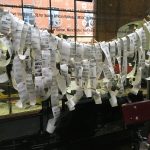 Claire Dean is now a writer, researcher and lecturer in Creative Writing at Edge Hill University.
Claire Dean is now a writer, researcher and lecturer in Creative Writing at Edge Hill University.
Contact: deanc@edgehill.ac.uk
